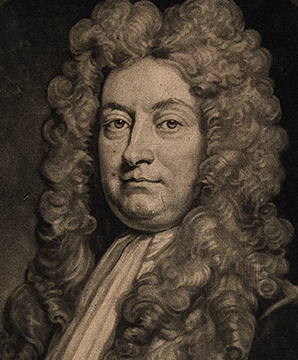BITE-SIZED HISTORY
Published in Issue 6 (November/December 2020), News, Volume 28BY TONY CANAVAN
Drought and lockdown lucky for archaeologist
Marion Dowd, an archaeologist and local resident, was marking the easing of Covid-19 restrictions with a picnic on the shore of Lough Glencar (on the Sligo–Leitrim boundary) in June with her son Fiachra (12) and another family member when she spotted hundreds of pieces of chert, a rock used to make tools, on the lough shore. The lake’s water-level had dropped owing to a prolonged dry spell, revealing a ‘knapping floor,’ a place where people shaped stone into tools more than 4,000 years ago. The 930 tools provide insight into the lives of people who lived there thousands of years ago. They were used for gutting and cleaning fish, woodwork, basket-making and food preparation. Dr Dowd said that this part of the shore was dry land in the distant past but that the rising water-level of Lough Glencar had covered it over time. Since the discovery, the water level has risen again, submerging the knapping floor once more. The tools have been recorded by Dr Dowd and her colleague Dr James Bonsall, to be deposited in the National Museum of Ireland. The discovery of the chert tools really was a case of the right person in the right place at the right time.
Maritime Mile Treasure Trail for Belfast
A new outdoor family experience aimed at encouraging visitors to explore Belfast’s historic waterfront has been launched. The Maritime Mile Treasure Trail is made up of eighteen stops with questions, clues, facts and challenges on a series of information panels. There will be weekly prize draws as well as a main prize draw of a specially commissioned Maritime Mile painting by Belfast artist and former Harland & Wolff employee Colin Davidson. There is also a mini-explorer’s version of the trail for younger visitors, also with prizes. Everyone who completes the experience will get a Maritime Mile certificate. The new treasure trail is a joint initiative of the Titanic Foundation and Belfast Harbour. The Maritime Mile is not just for tourists, as it is hoped that it will also inspire local people to increase their knowledge of the city’s important maritime heritage. Further information at maritime-mile.com.
Hans Sloane bust removed

Above: A mezzotint of Sir Hans Sloane by J. Faber Jr, 1729.
A bust of Sir Hans Sloane has been removed from its pedestal in the British Museum. Ironically, the museum was founded around his collection of c. 71,000 artefacts. Sloane was born in Killyleagh, Co. Down, where a life-size statue of him still stands in the town square. He earned his fortune and paid for his collection from his wife’s family’s sugar plantation in Jamaica. While physician to the governor of Jamaica in 1687–9, he amassed a huge number of natural history and cultural artefacts. His marriage to Elizabeth Langley Rose in 1695 saw the Royal Society member finance his collection with her money, but he also had investments in the Royal African and South Sea Companies, both of which traded in slaves. In his will, Sloane arranged for his collection to be bought by the Crown for a £20,000 payment to his heirs, leading to a 1753 Act of Parliament establishing the British Museum. The bust of Sloane is now in a secure cabinet alongside artefacts explaining his work in the ‘exploitative context of the British Empire’ as a ‘collector/slave owner’. The British Museum admits that the Black Lives Matter movement had ‘been a catalyst’. From an Irish perspective, the fact that Sloane came from a Scots-Irish family who benefited from a different kind of plantation, following the expulsion of natives and the confiscation of their land, seems never to have been an issue.
New heritage advocacy group
Heritage Voice is a newly formed group advocating for recognition of the intrinsic, economic, social and personal values of heritage to all people and communities of Ireland on a local and a national level. A voluntary collective of individuals involved in and passionate about Irish cultural heritage, their goal is to make sure that the voice of Irish heritage is heard at both local and national levels, to ensure that it is recognised as one of the cornerstones of Irish identity and culture and that its role in the Irish economy is acknowledged.
‘Heritage’ is an umbrella term that covers a wide variety of areas, some of which have seen stronger representation than others in the past. This is a position that Heritage Voice aims to correct. The work of members focuses on built and cultural heritage, both tangible and intangible, including archaeology, architectural heritage, folklore, local history and more. They aim to work in partnership with existing heritage bodies and representatives and to speak out as an independent, positive voice for all involved in heritage in the many areas of life on which it has an impact.
Heritage Voice is currently made up of a steering committee and, as membership grows, they foresee the creation of working groups to carry out research and engage in various campaigns and other activities. For further information, see www.heritagevoice.ie.
















